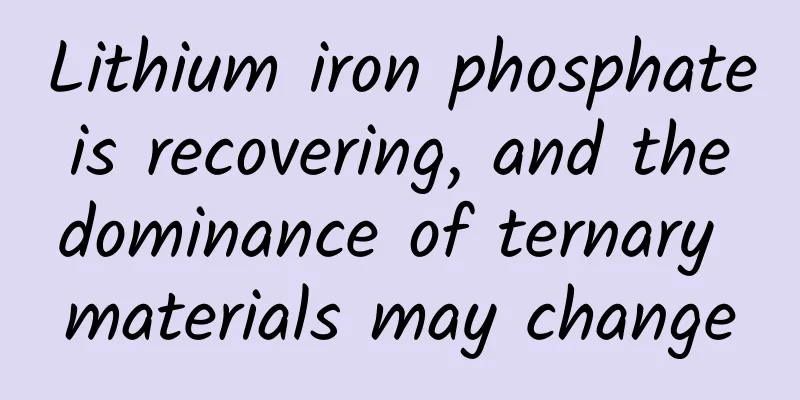Say goodbye to inflammable and explosive materials! This battery that fights a desperate battle leads a new battery revolution

|
With the continuous advancement of science and technology, human beings have an increasing demand for energy, and batteries, as one of the indispensable energy storage devices in modern society, are also constantly developing. From early dry batteries and lead-acid batteries to the widely used lithium-ion batteries today, every innovation in battery technology has promoted major breakthroughs in the field of science and technology . However, traditional lithium-ion batteries also have many problems, such as safety hazards, resource shortages, and high costs, which has led people to look for more advanced, safer, and more environmentally friendly battery technologies . In this context, aqueous zinc-ion batteries came into being and are expected to lead a new round of revolution in battery technology. This article will introduce the working principle, advantages, application prospects and future development direction of aqueous zinc-ion batteries, and take you into this new revolution in battery technology. 1. Working principle of aqueous zinc ion battery As the name implies, aqueous zinc-ion batteries use zinc as the negative electrode and store and release electrical energy through the movement of zinc ions in aqueous solution between the positive and negative electrodes. Compared with traditional lithium-ion batteries, the biggest feature of aqueous zinc-ion batteries is that they use water as the electrolyte instead of flammable and explosive organic electrolytes, which makes them safer and therefore attracts much attention. Aqueous zinc-ion batteries are energy storage devices based on zinc ions and zinc oxide, and their working process mainly involves electrochemical reactions. When the battery is discharged, zinc ions migrate from the positive electrode to the negative electrode and combine with electrons at the negative electrode to form metallic zinc . This process is accompanied by the flow of electrons, generating an electric current. When the battery is charged, zinc ions migrate from the negative electrode to the positive electrode, and electrons flow to the positive electrode through an external circuit, preparing for the next discharge. During the charging process, zinc ions escape from the negative electrode, migrate to the positive electrode through the electrolyte solution, and react chemically with the positive electrode material to form a stable compound . During the discharge process, the process is reversed, and zinc ions return from the positive electrode to the negative electrode, releasing the stored electrical energy. 2. Advantages of aqueous zinc-ion batteries 1. High security Because water is used as an electrolyte, aqueous zinc-ion batteries are extremely safe. Compared with flammable and explosive organic electrolytes, water is more stable and reduces the risk of battery short circuit, combustion, or even explosion . 2. Good environmental protection Zinc is an abundant earth element that is easy to recycle and reuse, and has little impact on the environment after the battery is discarded. Aqueous zinc-ion batteries do not contain any toxic elements such as lithium and cobalt, and will not cause environmental pollution problems such as leakage. The pollution generated during production and use is relatively small. 3. Low cost Zinc is an abundant and cheap metal , so the material cost of aqueous zinc-ion batteries is relatively low, and the production process of zinc-ion batteries is relatively simple and easy to scale up. 4. Moderate energy density Although the energy density of aqueous zinc-ion batteries is slightly lower than that of lithium-ion batteries, it can already meet the needs of many application scenarios. Moreover, by improving the positive and negative electrode materials and electrolyte formulations, the energy density still has room for improvement, which can provide a longer battery life. 5. Longer service life The positive and negative electrode materials of aqueous zinc-ion batteries have better chemical stability, so they can withstand more charge and discharge cycles without being easily damaged, which makes aqueous zinc-ion batteries a more reliable and durable energy storage tool. 6. Fast charging speed Due to its special electrode material and electrolyte system, aqueous zinc-ion batteries can be charged relatively quickly. 3. Application prospects of aqueous zinc-ion batteries Aqueous zinc-ion batteries have the above significant advantages, so they have broad application prospects in many fields. The following are some possible application areas: 1. Electric vehicles As an environmentally friendly and efficient means of transportation, electric vehicles have received widespread attention. However, the range of electric vehicles is still a bottleneck problem. The high energy density and long service life of aqueous zinc-ion batteries provide a new solution for the development of electric vehicles. Electric vehicles using aqueous zinc-ion batteries can have a longer range, thus better meeting people's travel needs. 2. Distributed energy storage Aqueous zinc-ion batteries are suitable for distributed energy storage systems, which can provide reliable power supply for homes, businesses, etc. By combining with renewable energy, stable output and efficient utilization of energy can be achieved. 3. Mobile devices Aqueous zinc-ion batteries are small in size and light in weight, and can also be used in mobile devices such as mobile phones and tablets. Their high energy density and fast charging capabilities can meet the needs of modern people for mobile devices. 4. Military Aqueous zinc-ion batteries also have broad application prospects in the military field, such as drones, submarines, reconnaissance equipment, etc., to ensure their long-term operation. Its good safety and long life characteristics give it unique advantages in the military field. 5. Power system stability Aqueous zinc-ion batteries can be used as an auxiliary energy storage device in the power system and can be used in scenarios such as peak load regulation and valley filling of power grids and grid connection of renewable energy. They can help improve the stability of the power system and reduce energy waste and carbon emissions. IV. Future Development Direction 1. Improve energy density One of the future development directions of aqueous zinc-ion batteries is to improve their energy density, achieve longer battery life and smaller volume and weight by improving electrode materials and optimizing battery structure. 2. Expanding application areas With the continuous advancement of technology and the increase in application demand, the application field of aqueous zinc-ion batteries will be further expanded. For example, it has broad application prospects in the fields of smart home and the Internet of Things. 3. Reduce costs By optimizing the production process and finding lower-cost raw materials, the production cost of aqueous zinc-ion batteries can be reduced, making them more competitive in the market. 4. Strengthen cycle life research Improving the cycle life of aqueous zinc-ion batteries is one of the important research directions in the future. By deeply studying its attenuation mechanism and influencing factors, the battery's charging and discharging strategy can be optimized to extend its service life. 5. Promote industrial development Strengthen cooperation and exchanges with the industry to promote the industrialization of aqueous zinc-ion batteries. Accelerate their application and popularization in various fields by establishing a complete industrial chain and ecosystem. V. Conclusion As a new type of battery technology, aqueous zinc-ion batteries are leading a new revolution in battery technology with their unique advantages and broad application prospects. Although there are still some technical challenges, such as the growth of zinc dendrites and the improvement of cycle life, researchers are actively studying solutions to continuously promote the technological progress of aqueous zinc-ion batteries. We have reason to believe that with the deepening of scientific research and the advancement of industrialization, aqueous zinc-ion batteries will play an increasingly important role in the field of energy storage and conversion in the future, bringing more convenience and possibilities to our lives. Let us look forward to this new revolution in battery technology, which will open up a new era of greener, safer and more efficient energy for us. |
Recommend
Marketing Promotion丨3 suggestions for brands to build their own content and influencer ecosystem
2020 is the first year for brands to focus on sho...
How to increase Internet users!
When it comes to user growth , most people will t...
What are the specific methods of selling products on Douyin?
From Haidilao to Daancha, Douyin has demonstrated...
Don’t be afraid, talking about money with users is not that scary!
Does anyone have this feeling? Many operators are...
If iPhone X and Huawei Mate10 have the same price, which one would you choose?
The Apple iPhone X, which is about to be official...
Li Ronghao's new song lyrics have nine words. What's going on? Finally the truth is revealed. It turns out to be like this!
Brother, that's awesome! Early this morning, ...
Cultural Relics + 928 Sets! World-class Major Archaeological Discovery →
About 150 kilometers southeast of Sanya City, Hai...
5K iMac reveals Apple's cutting-edge technology
As the first all-in-one computer with a 5K displa...
Why are the wheelchairs used by Paralympic athletes in a figure eight shape?
Recently, the Paris Paralympic Games are in full ...
Xia Qijiang's "16 Zero-Based Watercolor Painting Video Courses"
【Lecturer Introduction】 Xia Qijiang, a well-known...
The return capsule of the Shenzhou XIV manned spacecraft landed successfully. The Shenzhou XIV manned flight mission was a complete success.
Xinhua News Agency, Jiuquan, December 4 (Reporter...
The gravitational strength is 100 billion times that of the Earth. How powerful is the terrifying cosmic object magnetar?
People have been exploring the mysteries of the u...
Is the kelp you eat female, male, or hermaphroditic?
Kelp is a common guest on the dinner tables in co...
Cough cough cough cough! More and more people around me are catching colds and fevers. Is the new coronavirus making a comeback?
Audit expert: Chen Ying Doctor of Traditional Chi...
Why is the conversion rate of my information flow ads so low?
Dear information flow optimizers , as you frequen...









